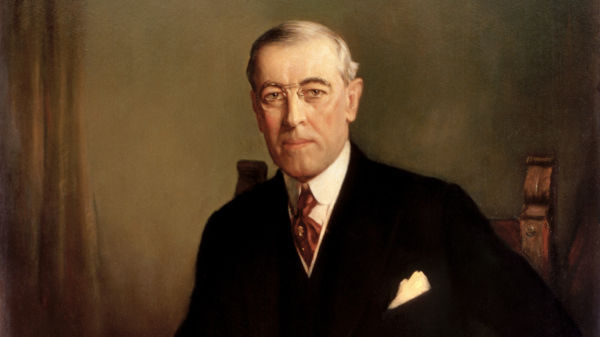In early February 2025, President Donald Trump claimed that Canada prohibits U.S. banks from operating within its borders. In reality, numerous American banks, such as Citibank and JPMorgan Chase, have established operations in Canada, adhering to the country’s banking regulations. But there are numerous differences and nuances that we are going to explore here.
Canadian banks that operate in the United States
Scotiabank
- A leading financial institution in North America that offers retail, commercial, corporate, and trade finance services
- Serves large national and multinational companies
- Operates in the U.S., Canada, and Mexico
CIBC
- Has offices across the United States
- Offers services such as the CIBC US$ Personal Account, CIBC Bank USA Smart Account, and CIBC U.S. Dollar Aventura Gold Visa Card
- Offers expert advice and support to Canadians who want to finance a home in the U.S.
RBC
- Offers cross-border banking services to Canadian travelers and expats
- Offers free transfers up to $25,000 between RBC Royal Bank and RBC Bank U.S. accounts
- Offers US dollar chequing accounts that allow for everyday payments
- Major Canadian banks like BMO also offer US dollar chequing accounts.
American banks operating in Canada
American banks are very much allowed to operate in Canada—often doing so as either branches (under Schedule III of the Bank Act) or as locally incorporated subsidiaries (Schedule II). For example, several U.S. banks have established a presence in Canada, including:
- Bank of America, National Association
- Citibank, N.A.
- Capital One Bank (USA), N.A.
- Comerica Bank
- Fifth Third Bank National Association
- JPMorgan Chase Bank, National Association
- M&T Bank
- Northern Trust Company, Canada Branch
- PNC Bank, National Association
- State Street
- U.S. Bank National Association
- Wells Fargo Bank, National Association, Canadian Branch
In addition, other major U.S. financial institutions like Goldman Sachs and Morgan Stanley maintain offices in Canada—primarily to offer corporate, investment, and wealth management services even if they don’t operate full-service retail deposit-taking branches.
These operations are fully compliant with Canadian banking regulations established under the 1991 Bank Act, which permits foreign banks to enter the Canadian market under specific conditions.
But the way Canadian banks operate in canada is different from how American or any other multi-national banks operate in Canada. Canadian banks operating in Canada operate under Schedule I. Whereas US banks operating in Canada operate under Schedule II.
Schedule I banks
Schedule I banks are domestic banks that are not subsidiaries of foreign banks and are allowed to accept deposits from the public. They are regulated under the Bank Act (1991) and are overseen by the Office of the Superintendent of Financial Institutions (OSFI).
- Canadian-Controlled:
- These banks are domestically owned and operated, meaning they are not subsidiaries of foreign institutions.
- Public ownership is allowed, but no single shareholder can own more than 20% of voting shares or 30% of non-voting shares without government approval.
- Deposit-Taking Institutions:
- They can accept deposits from individuals and businesses, and these deposits are typically insured by the Canada Deposit Insurance Corporation (CDIC) for up to $100,000 per eligible deposit category per depositor.
- Full-Service Banking:
- These banks provide a range of personal and commercial banking services, including loans, mortgages, credit cards, and investment products.
- Regulatory Oversight:
- Schedule I banks are subject to strict capital, liquidity, and risk management requirements set by OSFI to ensure financial stability.
- They must comply with the Bank Act, which governs ownership, corporate structure, and permissible activities.
There are also Schedule II and schedule III banks, which operate under different rules and are far more restricted in their operation. Quite simply, a Canadian bank can operate with a branch in the United States taking retail deposits, having no difference between them and regular US banks whereas US banks cannot operate a branch on a retail level.
Schedule II banks
These are foreign bank subsidiaries that are incorporated under Canadian law and can accept deposits (e.g., AMEX Bank of Canada, ICICI Bank Canada).
Schedule III banks
These are foreign bank branches operating in Canada, usually offering specialized services but with restrictions on deposit-taking (e.g., Citibank N.A., Bank of America Canada Branch).
Differences Between Schedule I, II, and III Banks
| Feature | Schedule I (Domestic) | Schedule II (Foreign-Owned Subsidiary) | Schedule III (Foreign Bank Branch) |
|---|---|---|---|
| Column 1 Value | Canadian-controlled | Foreign-controlled, Canadian-incorporated | Foreign-controlled, not incorporated in Canada |
| Column 1 Value 2 | Yes | Yes | Limited (only for certain clients) |
| Column 1 Value 3 | Yes | Yes | No |
| Column 1 Value 4 | Full OSFI & Bank Act compliance | Full OSFI & Bank Act compliance | Limited OSFI oversight |
What to look out for?
Well, so if a US bank wants to operate in Canada, what are the rules under Schedule II you ask.
Banks with global headquarters may conduct business in Canada only as branches or subsidiaries. In order to unilaterally differentiate between retail and wholesale deposits, banks that are allowed to operate on a branch basis are not allowed to accept deposits of less than $150,000. Banks that are only permitted to function as “lending branches” are also required to limit the kinds of customers they accept deposits to a specified list.
What are subsidiaries and branches?
Although they are typically exempt from deposit-taking limits, subsidiaries need their own governance and risk management systems, as well as local capital and liquidity, because they are distinct legal entities from their parents. A branch, on the other hand, is only a Canadian location of the bank with its global headquarters; as such, it does not have its own Canadian board or capital. To offset their Canadian liabilities, branches must, nevertheless, keep “capital equivalency deposits” in Canada. Additionally, in Canada, a branch needs a principal officer who will be expected to carry out a governance function like to that of a local board.
So you see, US banks operating in Canada is not the same as US banks operating in the US or Canadian banks operating in the US.




